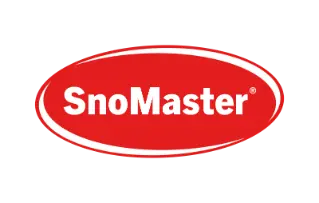Fishing skis, boats and bikes…our favourite toys all need a good wash down after an action-packed outdoor adventure. Whether blasting caked-on mud from your off-road motorbike, rinsing saltwater off your fishing ski or sand and algae off your boat, having a portable pressure washer on hand cuts wash time in half, allowing you more time to enjoy ice-cold refreshments with friends and family around the fire.
What about 4×4 off-roading the picturesque Sani Pass in the Southern Drakensberg? After navigating the twists and turns of the 45 kilometer trail, characterised by a combination of rocks, boulders, gravel and mud along a narrow road, flanked by sheer cliffs, a portable pressure washer makes cleaning the carriage a lot easier.

But, what if there isn’t a plug point nearby? Or if Eskom switches off the lights to save the national grid from collapsing? Your best cleaning assistant in these situations is a cordless pressure washer.
Being battery operated, SnoMaster’s 12V portable pressure washer can be recharged at any plug point or anywhere off the beaten track by means of a portable solar panel.
With domestic-use pressure washers gaining popularity in recent years, consumers want to know how they work, how to choose the right one and how to use a pressure washer.
Here are our answers to these frequently asked questions:
How Do Portable Pressure Washers Work?
For all intents and purposes, portable pressure washers punch above their weight, shooting out a small amount of water at mind-blowing high pressure.
The motor that powers the pump accelerates water from either a garden hose or built-in water tank to create phenomenal pressure that is capable of lifting grease, oil, caked-on mud and stubborn grime off surfaces.
Differently shaped nozzles alter the spray pattern. Depending on the intensity of the motor, a powerful stream from a thin nozzle can strip paint from a deck, while a lighter spray from a wider nozzle can help you remove sand from your speedboat.

Are All Pressure Washers the Same?
Depending on the power source and size of the motor, pressure washers are divided into different categories.
A cordless pressure washer such as the SnoMaster 12V portable pressure washer, is the quintessential travel buddy for adventurers who spend a lot of time on the road. These rechargeable battery-powered pressure washers are specifically designed for cleaning cars, bikes, boats and caravans off the beaten track but are also perfect for smaller jobs at home such as cleaning patio furniture, decks, and rinsing dust off walls and windows.
*Expert tip: spray windows at a 45-degree angle at low pressure to avoid breakage.
Electric pressure washers are also ideal for smaller, domestic jobs such as cleaning the roof but, they restrict freedom of movement as you need to remain close to a power outlet or lug around a long extension cord.
Heavy-duty cleaning jobs call for a diesel or petrol engine pressure washer. These brawny beasts pack the powerful punch required for industrial cleaning applications where power supply is limited or non-existent, such as on remote building sites.
How to Use a Portable Pressure Washer
Pressure washers are easy to operate but can cause injury or damage to property if used incorrectly. Here are a few simple safety measures to protect yourself and others as well as property:
- Read the manual. Carefully read the user manual or watch instructional videos online before using a pressure washer for the first time.
- Take the necessary precaution. Wear safety glasses to protect your eyes from particles of paint and dirt.
- Be careful where you stand. Do not stand on an unstable ladder or surface when operating a pressure washer.
- Assume the proper position. Maintain a sturdy grip and in a firm stance to prevent losing control of the spray gun.
- Be mindful of your surroundings. Take note of passing people or random animals and make sure not to hit them. A pressure washer is very powerful and should not be treated like a garden hose.
- Test the spray on the ground. After that, rinse the entire surface and wheels of your car to remove mud, dust, salt and bugs.
- Check the nozzle’s position. The nozzle should be held at least a foot away from the car, truck, or bike and aimed at a downward angle to avoid causing damage to the car.
- Maintain a safe distance. Stand a little further back when spraying exposed areas like side mirrors, headlights and brake lights to avoid damage.
- Apply detergent by hand. Use a wash mitt and let the soap sit for about five minutes.
- Spray intermittently. This will help make sure that the soap doesn’t dry on the paint and make marks.
- Rinse off the soap. Stand three to four foot away from the car and using a wider nozzle, wash away the soap from the top down.
Once you’re done. It is best to dry your car with a leather chamois as it absorbs water best and is most gentle on paint. Unroll the chamois and lay flat on the car. Slowly pull it towards you, keeping full contact with the car’s surface. Wring out when saturated and repeat over every section until the car is dry. When done, wring out the chamois and put back in its container to keep it moist for next time.
*Expert tip: to avoid bumper stickers peeling off, spray that area straight on and not at an angle.

